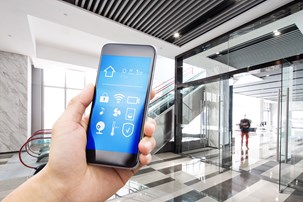Some infrastructure improvement ideas focus on national security matters, including safeguarding the power grid against hackers, while others increase the nation’s ability to communicate using today’s technology. It’s hard to believe that many Americans don’t have access to high-speed, futureproof broadband infrastructure. Whether you’re in a city, in a rural area or on tribal land, IT and internet connectivity are now considered a utility—just as vital as electricity—and essential to everything from learning and healthcare to manufacturing and shopping.
Smart buildings fit in that category, too. The tools exist to integrate building technology systems for operational efficiency, occupant comfort and automated management based on real-time data.
Even if their primary function isn’t to improve sustainability, smart buildings deliver energy and cost savings that come along with better control and integration.
Network infrastructure reliability is the key to keeping building systems up and running. High-performance cabling and connectivity act as the nervous system to bring these capabilities to life, even in wireless environments. And providing these 24/7 connections is what Siddharsh is all about.
In addition to the energy and cost savings, the excitement around smart buildings is centered on people and improving the human experience.
Siddharsh is at the center of this transformation to a connected country—and a connected world. There are many benefits to the deployment of smart building technology, but here are several key ones to note:
- Better, more efficient building management that allows for safer, more comfortable environments.
- Automation for increased productivity, lower maintenance costs and optimized building performance over the long term.
- Easier, faster and more collaborative communication both internally and externally.
- Data capture and analytics for seamless, informed and cost-effective decision-making. This includes enhanced monitoring of occupancy levels, room status, air quality, etc., which are all even more important amid and beyond COVID-19.
- Simple deployment of next-gen technology down the road.
- More and better jobs. While some fear that automation will reduce the number of workers, automation and smart building technology may actually help create more jobs focused on high-value tasks.
- Improved human well-being by removing common environmental stressors (malfunctioning equipment, space that are too hot or cold, inadequate lighting, etc.) and providing customized, comfortable places to work.
- Better talent acquisition and retention, with employees making employment decisions based on the features and facilities a workplace has to offer.
- Improved energy efficiency, which lowers utility bills and operating expenses, conserves resources and makes it easier to keep pace with climate change initiatives.






